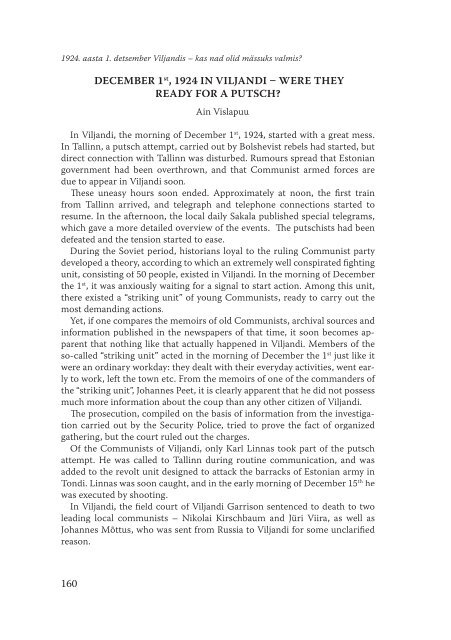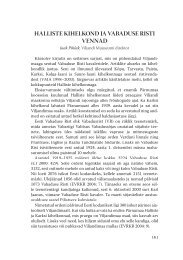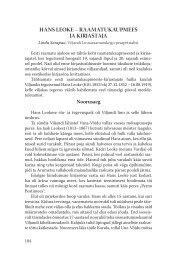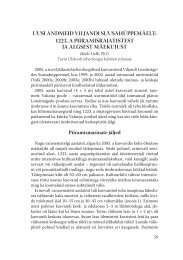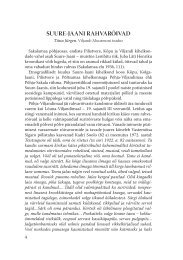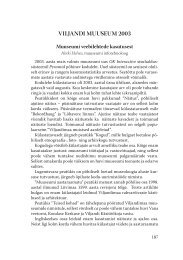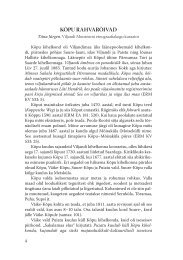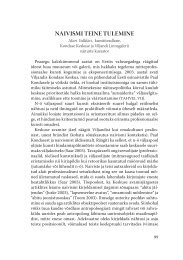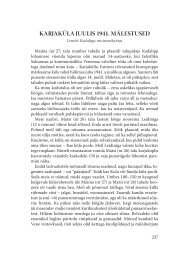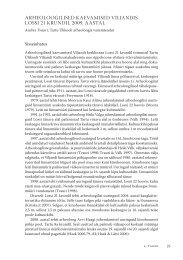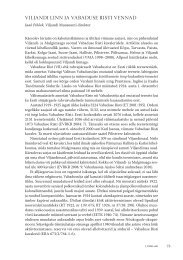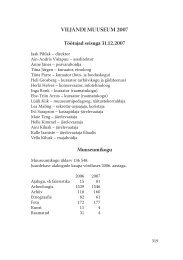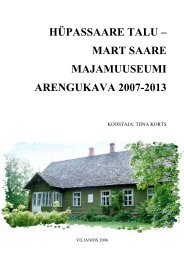1924. aasta 1. detsember viljandis - Viljandi Muuseum - Viljandimaa
1924. aasta 1. detsember viljandis - Viljandi Muuseum - Viljandimaa
1924. aasta 1. detsember viljandis - Viljandi Muuseum - Viljandimaa
- No tags were found...
Create successful ePaper yourself
Turn your PDF publications into a flip-book with our unique Google optimized e-Paper software.
<strong>1924.</strong> <strong>aasta</strong> <strong>1.</strong> <strong>detsember</strong> <strong>Viljandi</strong>s – kas nad olid mässuks valmis?<br />
DECEMBER 1 st , 1924 IN VILJANDI – WERE THEY<br />
READY FOR A PUTSCH?<br />
Ain Vislapuu<br />
In <strong>Viljandi</strong>, the morning of December 1 st , 1924, started with a great mess.<br />
In Tallinn, a putsch attempt, carried out by Bolshevist rebels had started, but<br />
direct connection with Tallinn was disturbed. Rumours spread that Estonian<br />
government had been overthrown, and that Communist armed forces are<br />
due to appear in <strong>Viljandi</strong> soon.<br />
These uneasy hours soon ended. Approximately at noon, the first train<br />
from Tallinn arrived, and telegraph and telephone connections started to<br />
resume. In the afternoon, the local daily Sakala published special telegrams,<br />
which gave a more detailed overview of the events. The putschists had been<br />
defeated and the tension started to ease.<br />
During the Soviet period, historians loyal to the ruling Communist party<br />
developed a theory, according to which an extremely well conspirated fighting<br />
unit, consisting of 50 people, existed in <strong>Viljandi</strong>. In the morning of December<br />
the 1 st , it was anxiously waiting for a signal to start action. Among this unit,<br />
there existed a “striking unit” of young Communists, ready to carry out the<br />
most demanding actions.<br />
Yet, if one compares the memoirs of old Communists, archival sources and<br />
information published in the newspapers of that time, it soon becomes apparent<br />
that nothing like that actually happened in <strong>Viljandi</strong>. Members of the<br />
so-called “striking unit” acted in the morning of December the 1 st just like it<br />
were an ordinary workday: they dealt with their everyday activities, went early<br />
to work, left the town etc. From the memoirs of one of the commanders of<br />
the “striking unit”, Johannes Peet, it is clearly apparent that he did not possess<br />
much more information about the coup than any other citizen of <strong>Viljandi</strong>.<br />
The prosecution, compiled on the basis of information from the investigation<br />
carried out by the Security Police, tried to prove the fact of organized<br />
gathering, but the court ruled out the charges.<br />
Of the Communists of <strong>Viljandi</strong>, only Karl Linnas took part of the putsch<br />
attempt. He was called to Tallinn during routine communication, and was<br />
added to the revolt unit designed to attack the barracks of Estonian army in<br />
Tondi. Linnas was soon caught, and in the early morning of December 15 th he<br />
was executed by shooting.<br />
In <strong>Viljandi</strong>, the field court of <strong>Viljandi</strong> Garrison sentenced to death to two<br />
leading local communists – Nikolai Kirschbaum and Jüri Viira, as well as<br />
Johannes Mõttus, who was sent from Russia to <strong>Viljandi</strong> for some unclarified<br />
reason.<br />
160


